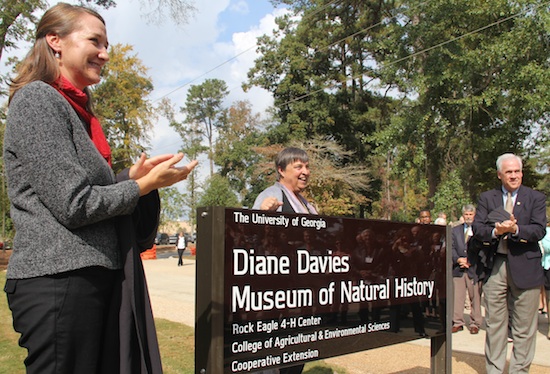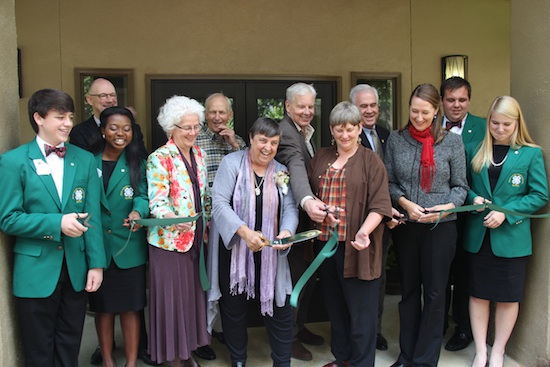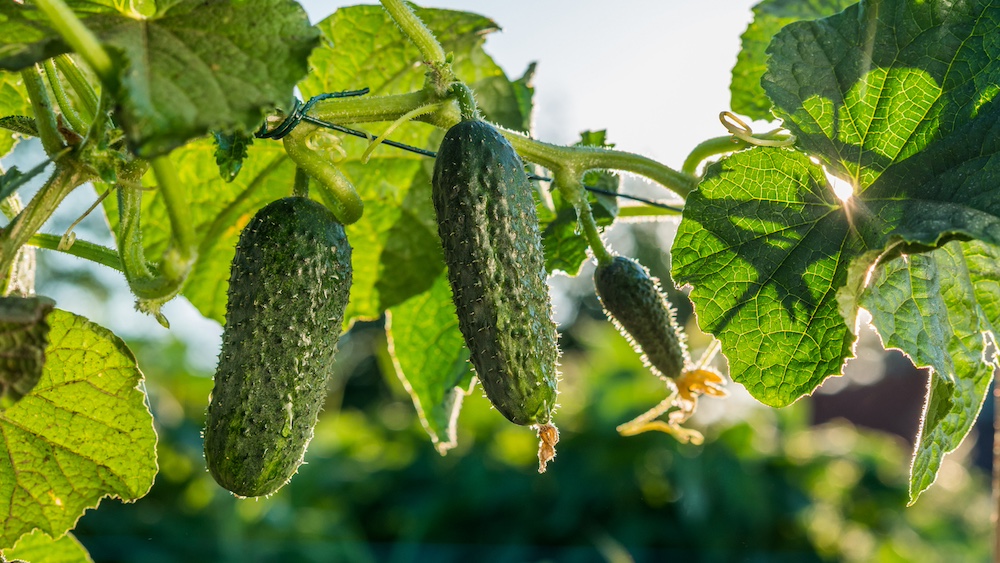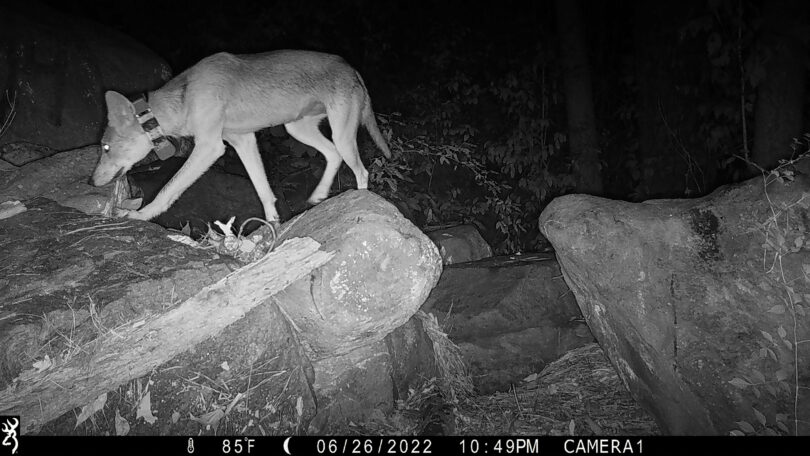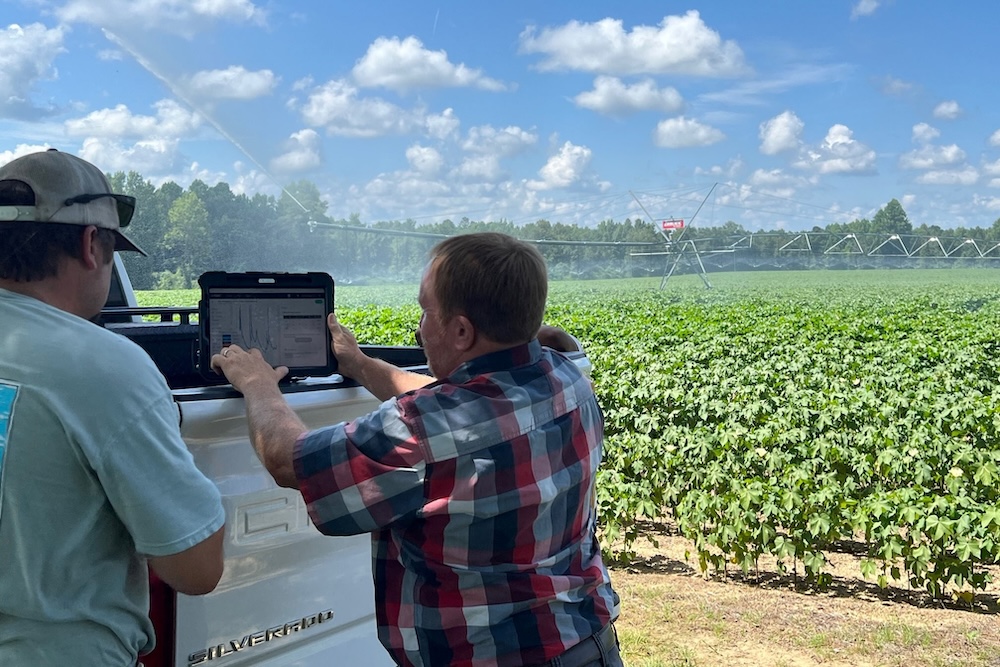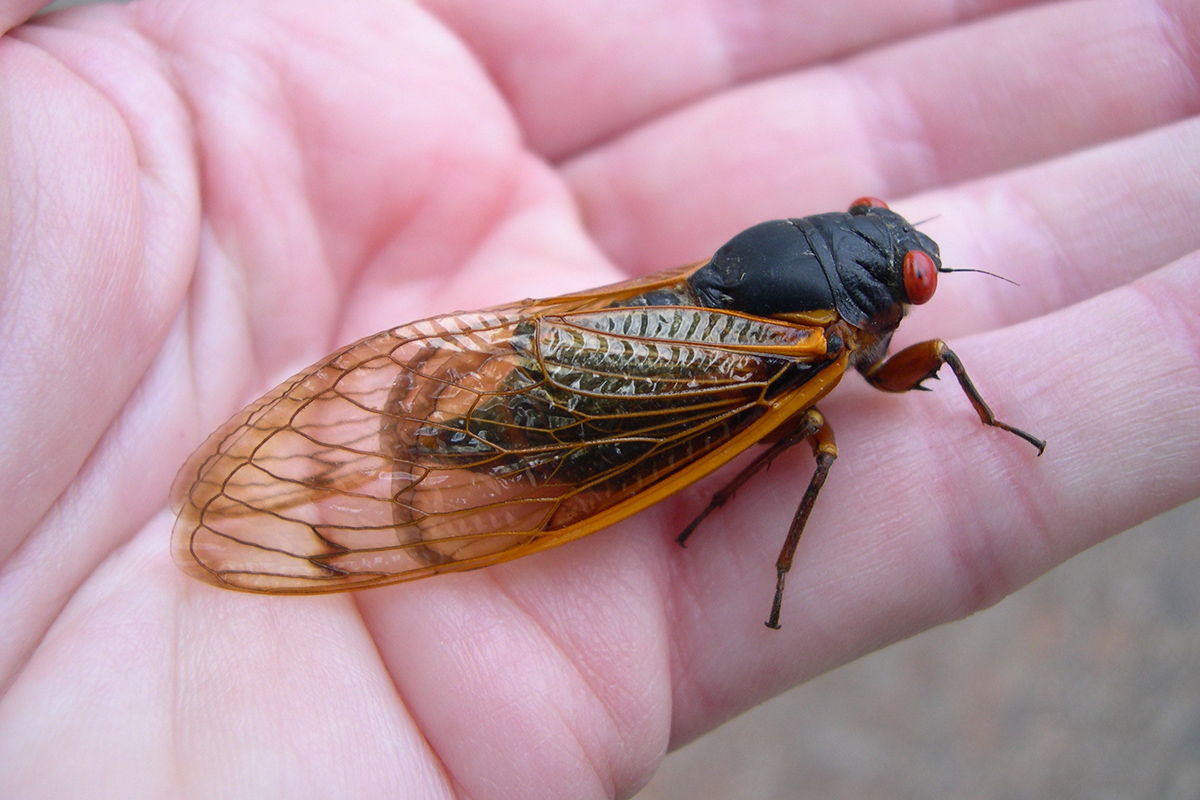Thirty-four years ago, Georgia 4-H State Leader Tom Rodgers gave Diane Davies $300 and six months to create an environmental education program for children. She turned that $300 into a nationally recognized program that has served over 1 million children in Georgia's public schools, private schools and home-schooled students.
The Georgia 4-H community came together to honor that achievement last week with the rededication of the Rock Eagle 4-H Center's Natural History Museum, now named for Davies.
Learning from nature
Now a retired 4-H specialist, Davies drew inspiration for the program from her childhood in the foothills and mountains of Pennsylvania and the connections she made between her schoolwork and time that she spent outside.
“I thought that I had been given the greatest gift of my life – to be able to use the outdoors as a dynamic, living laboratory to teach math, science, language arts, social studies and history,” she said. “The children were hungry for this kind of experience, and the teachers understood the value and the importance of connecting children to the land, so they can learn from it.”
The newly named Diane Davies Natural History Museum is one resource in the toolbox Georgia 4-H Environmental Education instructors use to teach children about the world around them. The museum was first housed in the Barkuloo-Rich Building at Rock Eagle, but soon outgrew the space.
“We had several natural history exhibits in the building and displays in the adjoining classrooms,” remembered Davies. “But the ceilings were so low that we couldn’t plan for larger and more expansive exhibits.”
Seeking funds in creative ways
Davies and then Georgia 4-H State Leader Tom Rodgers garnered funds to build the current museum from a single donor, Days Inn of America co-founder Deen Day Smith.
“The money was given as a challenge grant to challenge other donors to give,” she said. “Before the building was completed, I started working with a wide variety of donors to secure funding for the planned exhibits.”
With her strong will and determination, Davies used creative and unconventional ways to gain support, like asking the Georgia Egg Commission to fund the dinosaur egg exhibit.
“I approached them saying, kids are already interested in dinosaurs, this is one way you can get them interested in eggs,” she said. The commission funded the exhibit.
To plan the exhibits, Davies sought the help of experts like Lloyd Logan and Josh Larem in the University of Georgia Zoology Department.
“Lloyd had done some work for the Smithsonian Institute and other organizations on exhibit design. Many of the ideas for the initial exhibits, I sketched out on a napkin at the Taco Stand in Athens with Lloyd,” recalled Davis. “Later, I was able to hire a full-time exhibit designer who built most of the exhibits that are currently in the building.”
From humble beginnings
UGA Extension Associate Dean Beverly Sparks remembers the museum when it was still in its early phases of completion.
“I toured the building with Diane when I was a young UGA entomologist,” she said. “Diane lit up when she told me what her vision was for the museum as she pointed at the blank walls.”
Those blank walls are now covered with colorful graphics and life-like replicas of prehistoric dinosaurs like the mosasaur, sauropod, stryracosaurus and the albertosaurus. There are also exhibits dedicated to the Native Americans who once called Georgia home.
The museum also contains exhibits of current Georgia wildlife like the golden and bald eagles, Georgia minerals like kaolin and granite, Georgia forestry, Georgia agricultural crops and both past and current tools used by Georgia farmers. The live animal exhibit includes a collection of native snakes, frogs and turtles, as well as insects like honeybees and scorpions.
“I wanted all the (4-H Environmental Education program) resources, like the museum, to be a window to the world for the thousands and thousands of children we serve in this program. To see the enthusiasm for learning in their eyes, there is no greater reward than that,” Davies said.
Georgia 4-H State Leader Arch Smith said the museum represents the environmental education program.
“I don’t drive by the museum once when I don’t think about environmental education,” he said. “It’s the symbol for the 4-H EE program, which got its start here at Rock Eagle.”
Used by children across the state, open to public, too
Located at the Rock Eagle 4-H Center, the Diane Davies Natural History Museum is available for environmental education and summer camp students who visit the center. The museum is also open to the public on most third Sundays in conjunction with the center dining hall’s Sunday lunch.
The Georgia 4-H Environmental Education Program serves more than 44,000 students annually at six locations across Georgia: Rock Eagle 4-H Center in Eatonton, Wahsega 4-H Center in Dahlonega, Fortson 4-H Center in Hampton, Burton 4-H Center on Tybee Island, Jekyll Island 4-H Center on Jekyll Island and 4-H Tidelands Nature Center. For more on the Georgia 4-H program, go to www.Georgia4H.org.

